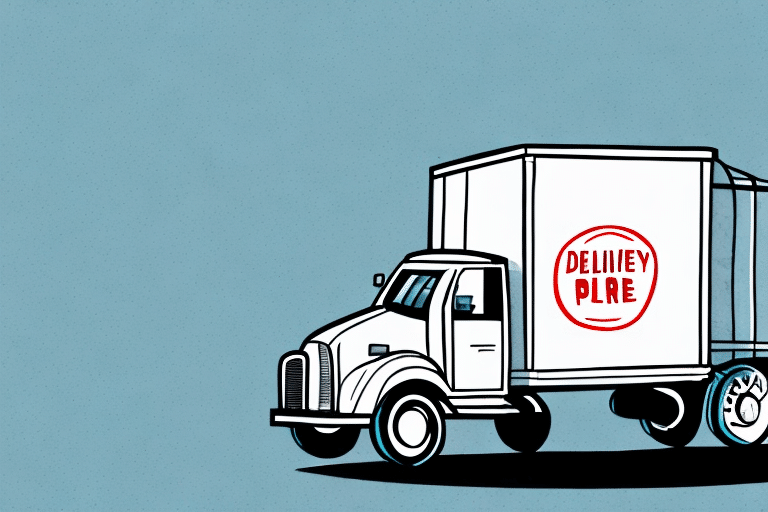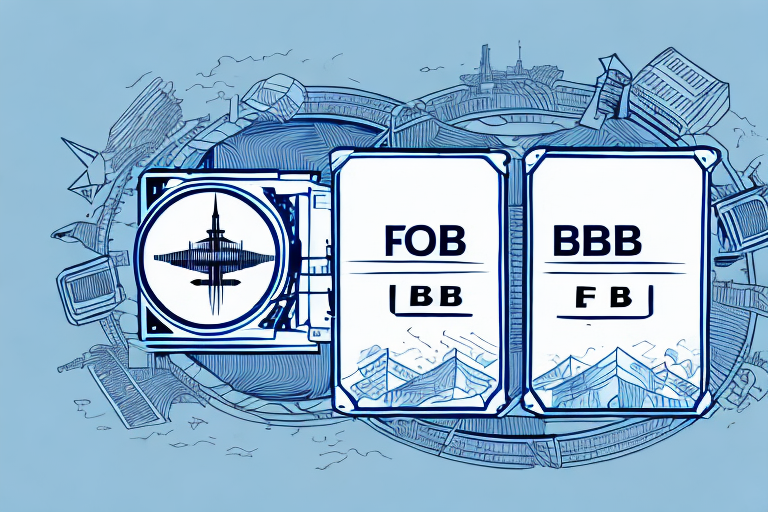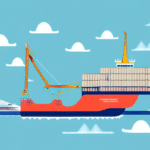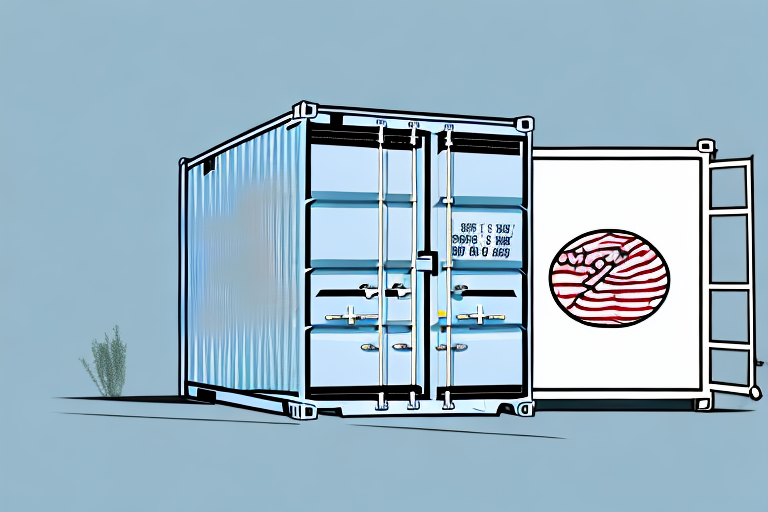What Is a FOB Delivery Point?
If you're involved in international trade as a business owner, supplier, or customer, you've likely encountered the term FOB delivery point. FOB stands for “Free on Board,” a widely recognized Incoterm that delineates the transfer of ownership and responsibility from the seller to the buyer for the goods being shipped. This article provides an in-depth exploration of FOB delivery points, enhancing your understanding of its implications in global trade.
Understanding the Definition of FOB Delivery Point
FOB delivery point refers to a shipping arrangement where the seller is responsible for delivering the goods to a specified location, typically a shipping vessel, and loading them onto the vessel. Once the goods are on board, the responsibility and ownership transfer to the buyer. This means the buyer bears all subsequent costs and risks associated with transporting the goods to their final destination.
For example, under FOB Shipping Point terms, if goods are shipped by sea, the seller's responsibility ends once the goods are loaded onto the vessel at the port of origin. From that moment, the buyer is accountable for transportation, insurance, and any potential losses or damages during transit.
It's essential to clearly define the FOB delivery point in the sales contract to prevent misunderstandings and ensure both parties are aware of their responsibilities. Misinterpretations can lead to disputes, especially in international transactions where multiple jurisdictions and regulations may apply.
The Origins and Evolution of FOB Delivery Points
The term FOB has historical roots in maritime trade, where goods were transported via ships. Originally, FOB specified the point at which ownership of goods transferred from the seller to the buyer during the loading process onto a vessel. As international trade expanded and transportation methods evolved, FOB became a standardized term to streamline and clarify shipping responsibilities.
With the advent of containerization in the mid-20th century, FOB delivery points adapted to modern logistics, allowing for more efficient loading and unloading of goods. This evolution has made FOB a fundamental Incoterm used across various industries beyond maritime shipping, including air, rail, and road transport.
Today, FOB remains a cornerstone in international trade, facilitated by organizations like the International Chamber of Commerce (ICC), which regularly updates Incoterms to reflect current trade practices and logistical advancements.
FOB Delivery Points in International Trade
Role and Importance
In the context of international trade, FOB delivery points play a critical role in defining the division of responsibilities between buyers and sellers. By specifying where the transfer of ownership and risk occurs, FOB terms help in allocating costs, mitigating risks, and ensuring a clear understanding of each party's obligations.
Impact on Cost and Risk Management
FOB terms influence how costs related to shipping, insurance, and handling are distributed. Sellers benefit by knowing their responsibilities end once the goods are loaded, allowing them to predict and manage their costs accurately. Buyers gain control over the transportation process post-delivery point, enabling them to select preferred carriers and insurance providers to suit their risk management strategies.
According to the International Chamber of Commerce (ICC), clear Incoterm definitions like FOB are essential for reducing misunderstandings and legal disputes in international transactions.
Advantages and Disadvantages of FOB Delivery Points
Advantages for Sellers
- Cost Control: Sellers can better manage and predict their costs by limiting their responsibilities to the delivery point.
- Risk Mitigation: Transferring responsibility at the loading point reduces the seller's exposure to risks during transit.
Advantages for Buyers
- Control Over Shipping: Buyers can choose their preferred shipping methods, carriers, and insurance policies.
- Potential Cost Savings: Buyers may negotiate better shipping rates and optimize logistics based on their specific needs.
Disadvantages for Sellers
- Loading Risks: Sellers remain responsible for any damage or loss during the loading process onto the vessel.
Disadvantages for Buyers
- Increased Responsibility: Buyers bear the cost and risk of goods once they are loaded onto the vessel.
- Customs and Documentation: Buyers may face complexities related to customs clearance and documentation in the origin country.
Different Types of FOB Delivery Points
FOB Origin (Shipping Point)
Under FOB Origin, the buyer assumes ownership and responsibility as soon as the goods are loaded onto the shipping vessel at the point of origin. The buyer is responsible for all subsequent costs and risks.
FOB Destination
FOB Destination means the seller retains responsibility and ownership until the goods reach the buyer’s specified location. The seller covers all transportation costs and risks until delivery is complete.
FOB Delivered
FOB Delivered terms specify that the seller is responsible for delivering the goods to a designated location, after which the buyer assumes responsibility. This type is often used for goods that require careful handling during transport.
Factors to Consider When Choosing a FOB Delivery Point
Mode of Transportation
The choice of shipping method—sea, air, rail, or road—can impact the selection of an FOB delivery point. Different modes may require different handling and logistics considerations.
Location and Accessibility
Selecting a delivery point that is easily accessible and strategically located can reduce transportation time and costs. Proximity to major ports or distribution centers is often advantageous.
Security Considerations
For high-value or fragile goods, choosing a secure delivery point minimizes the risk of theft or damage during transit. Assessing the safety and security of the delivery location is crucial.
Cost Implications
Evaluating the total cost, including shipping, insurance, and handling fees, helps in selecting a FOB delivery point that aligns with budget constraints and financial planning.
Legal and Regulatory Compliance
Understanding the legal requirements and regulations of both the origin and destination countries ensures smooth customs clearance and adherence to international trade laws.
Common Mistakes to Avoid with FOB Delivery Points
Lack of Clear Contract Terms
Failing to specify the FOB delivery point clearly in the contract can lead to disputes over responsibilities and liabilities. It's essential to define all terms explicitly.
Inadequate Inspection of Goods
Not thoroughly inspecting goods upon delivery can result in accepting damaged or defective items, leading to financial losses and strained business relationships.
Ignoring Insurance Needs
Assuming that standard shipping covers all risks can be costly. Buyers and sellers should ensure appropriate insurance is in place to protect against potential losses.
Misunderstanding Incoterms
Incorrectly interpreting FOB terms can lead to unexpected obligations. Both parties should have a solid understanding of Incoterms or consult with freight forwarders or legal advisors.
Legal Considerations Surrounding FOB Delivery Points
FOB delivery points are governed by international trade laws and Incoterms, which outline the responsibilities and liabilities of each party. It's essential to:
- Understand Jurisdiction: Different countries have varying laws that can affect the interpretation of FOB terms.
- Comply with Regulations: Ensure adherence to import/export regulations, customs requirements, and documentation standards.
- Consult Legal Experts: Seek legal advice to navigate complex trade agreements and mitigate potential legal risks.
For more detailed information, refer to the International Chamber of Commerce's Incoterms 2020, which provides comprehensive guidelines on international shipping terms.
How to Negotiate Favorable FOB Delivery Terms
Negotiating FOB delivery points effectively involves clear communication and a mutual understanding of each party's needs and constraints. Here are some tips:
- Define Clear Objectives: Determine what each party aims to achieve from the shipping arrangement.
- Understand Responsibilities: Clearly outline the responsibilities and liabilities to avoid misunderstandings.
- Leverage Relationships: Use established business relationships to negotiate better shipping rates and terms.
- Seek Flexibility: Be open to adjusting terms based on changing circumstances or unforeseen challenges.
- Consult Experts: Engage with freight forwarders, legal advisors, and logistics professionals to inform negotiations.
Real-Life Examples of FOB Delivery Point Implementation
Several companies across various industries have successfully implemented FOB delivery points to streamline their international shipping processes:
Example 1: Electronics Manufacturer Exporting to Europe
An electronics manufacturer based in Asia uses FOB Origin terms to export products to European distributors. By controlling the shipping process from the origin port, the manufacturer ensures timely deliveries and maintains quality standards during transit.
Example 2: Agricultural Exporter Shipping to North America
A farmer exports fresh produce to North America under FOB Destination terms. This arrangement allows the exporter to oversee the handling and transportation of perishable goods, minimizing the risk of spoilage during shipping.
Example 3: Automotive Parts Supplier to South America
An automotive parts supplier negotiates FOB Shipping Point terms with South American clients. This enables the supplier to streamline their logistics operations and offer competitive pricing by controlling shipping costs from the point of origin.
The Future of FOB Delivery Points in Global Trade
As global trade continues to evolve with advancements in logistics and transportation technology, FOB delivery points are expected to remain integral to international shipping. Emerging trends influencing the future of FOB include:
- Digitalization: The integration of digital tools and platforms for tracking shipments and managing contracts will enhance the efficiency and transparency of FOB transactions.
- Environmental Sustainability: Increasing emphasis on sustainable shipping practices may lead to adjustments in FOB terms to accommodate eco-friendly transportation methods.
- Automation and AI: Automation in logistics can streamline the FOB delivery process, reducing human error and improving accuracy in responsibility transfers.
- Global Trade Agreements: New trade agreements and regulations will continue to shape the specifications and implementation of FOB delivery points.
Staying informed about these trends will help businesses adapt their FOB strategies to maintain competitiveness and compliance in the global market.
Comparison Between FOB and Other Delivery Terms
FOB is one of several Incoterms used to define shipping responsibilities. Comparing FOB with other terms like CIF (Cost, Insurance, and Freight) and EXW (Ex Works) can help businesses choose the most suitable option:
FOB vs. CIF
Cost: CIF includes the cost of insurance and freight, whereas FOB does not. Under CIF, the seller covers these costs up to the destination port.
Risk Transfer: With CIF, responsibility transfers to the buyer once goods are loaded, similar to FOB. However, the seller also covers insurance, providing additional protection for the buyer.
FOB vs. EXW
Responsibility: EXW places maximum responsibility on the buyer, requiring them to handle all aspects of shipping from the seller's premises. In contrast, FOB requires the seller to handle loading and initial shipping responsibilities.
Control Over Shipping: EXW gives the buyer complete control over the shipping process, while FOB balances responsibilities between buyer and seller.
Understanding these differences ensures that businesses select the delivery terms that best align with their logistical capabilities and risk management preferences.
Conclusion
FOB delivery points are a fundamental aspect of international trade, providing a clear framework for the transfer of ownership and responsibility between sellers and buyers. By comprehensively understanding FOB terms, their advantages and disadvantages, and how they compare to other Incoterms, businesses can optimize their shipping strategies, mitigate risks, and foster smoother international transactions. Staying informed about evolving trade practices and leveraging expert advice will further enhance the effectiveness of FOB delivery point agreements in a dynamic global market.




















